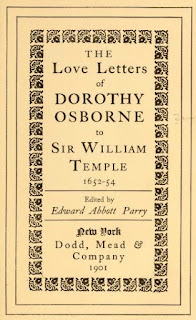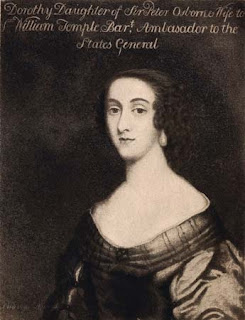Stilleben mit Trauben auf einer Porzellanschale, zwei Pfirsichen und gefülltem Sherryglas
I have always been very interested in the late Georgian/Regency periods of English history. My reading showed that sherry was a popular beverage of the time, and one of the few stronger beverages that it was socially acceptable for a lady to enjoy. A recent tasting event that I had the privilege to attend led me to read up on the history of sherry, and what a history it has! A rich and complex subject, I would like to give a general overview.
The roots of sherry go back three thousand years in Spain, where it appears that the Phoenicians brought vines and the knowledge of wine making. The city of Jerez, a key area for the production of sherry, was established by the Phoenicians as Xera. Other cultures contributed to the development of this wine and it was imported to Rome. When the Moors occupied Spain in the 8th century, despite the Muslim prohibition against the consumption of alcohol, they continued the cultivation of grapes for the production of wine for medicinal purposes and for raisins. The area was reclaimed in 1264 by King Alfonso X of Castile, and the wine industry continued under a reward system that affected who could grow what and where. Guild regulations controlled how long wine could be held (aged). From Spain, the wine traveled widely. Sherry was on ship with Christopher Columbus and Ferdinand Magellan on their voyages of discovery. Thanks to pirate raids, which led to the sale of sherry elsewhere, it became popular in other areas, especially England. It was already being traded in England during the 12th century.
Then known as sack or Sherish (another reference to Jerez), this wine was known in the Tudor court. Catherine of Aragon mentioned her husband the King keeping the best wines of the Canaries and Sherish for himself. It was a favourite of Shakespeare and Ben Jonson, who drank multiple bottles per day. When Sir Francis Drake seized thousands of barrels of sherry in 1587, this wine became extremely fashionable at court, which led to increased demand. Guild restrictions at this time prohibited aging of wines, which meant that the sherry of this time was essentially a very young white wine that required the addition of alcohol for preservation, resulting in what is called a fortified wine. This wine traveled well, and was commonly taken on long voyages. Of course, wars during this period also caused complications.
Delays caused some wine to sit, which resulted in oxidation, intensifying flavours and adding other nuances. In turn, newer sherries were mixed with older, more oxidized wines which also changed the character. Taste for the sweeter, stronger wines led to the addition of brandy to the mix. An attack on the area of Cadiz (near Jerez) having failed, numerous business men from England, Ireland and other places, set up businesses in Spain in the 17th – 19th centuries, to be sure of obtaining the desired quantities of wines. Names such as Sandeman, Harvey, Osborne and others were established at that time. The Peninsular Wars (part of the Napoleonic Wars) in the early 19th century, caused havoc as France attacked and even occupied the area around Jerez. Vines were destroyed and wines were stolen. However, the area rebounded again. Because of the conflict and difficulties, sales slowed and wine sat in casks, which led to an unintended oxidation and a concentration of flavour.
It is time to stop for a moment to consider the process of making sherry and the final product. True sherry was, and is, made only in Andalusia, in southwestern Spain. The process has literally evolved over centuries, and has adapted as rules and tastes change. A white wine is produced from two main varieties of grapes: the Palomino and Pedro Ximenez (a sweet grape). After fermentation, alcohol (originally a distilled grape liquor, subsequently a neutral brandy) is added, which increases the alcoholic content. Traditionally, sherry was quite dry, but it could be sweetened (and frequently was) with other additives ranging from sweet grape juice to sugar. (Adding sugar to sweeten wine goes back to the Romans). As time and changes in the guild rules and procedures occurred, more variations in flavour came forth. New wines were, and are still, blended with older ones in a process called Solera. The different types of sherry produced are Manzanilla and Fino (both dry), Amontillado and Oloroso (dry to medium-dry), and cream (sweet).
A key issue that gives sherry its character is the fact that air is deliberately let into the barrels to cause oxidation. According to WINDOWS ON THE WORLD COMPLETE WINE COURSE by Kevin Zraly, letting air in not only causes the required oxidation, it results in a loss of about 3% per day to evaporation, which he called “The Angel’s share”. (p. 158). (Although tastes were leaning toward the sweeter wines, like port and madeira, I suspect the sherry of the late Georgian/Regency era may have been a somewhat drier style, but there is no way to be sure.) In the 19th century, the guild was abolished which allowed for storage and aging of wines, which led to other modifications that changed the wine over time to the wide range of types we can now enjoy. Sherry was very popular during the Victorian era, and continued to be a favoured beverage into the 20th century. However, many people think of sherry in terms of the very sweet cream sherry, not knowing that there is a wide range of choice. Because of the sweetness of cream sherry, many consider sherry as specifically a dessert wine. However, certain varieties (especially the dry) are delicious with savory food.

Sherry glasses-photo by the author
Serving sherry is interesting as well. I did not find a reference to a specific “sherry glass” prior to the Victorian era. It is worth noting that wine glasses were smaller in earlier times. I have some antique wine glasses that hold only three to four ounces, which is considerably smaller than modern wine glasses. Sherry glasses seem to have become popular during the mid-Victorian era. I have three different types of glasses (see photo). Despite their different shapes, each only holds about two ounces. It seems possible that the slightly smaller shape became popular for sherry due to its being a fortified, and somewhat stronger, wine. However, there is no requirement for using a special sherry glass-sherry can be enjoyed in a regular wine glass. (Although I do believe that the special glass adds to the experience!) Although the sherry we enjoy today may not be exactly the same as that consumed in earlier times, it can provide a sort of shared experience, a touch of elegance and an idea of something in which someone of a previous era indulged.
Sources include:
Zraly, Kevin. WINDOWS ON THE WORLD COMPLETE WINE COURSE. New York: Sterling Publishing Co. 2002.
Spanish Fiestas on line. “Sherry Wine.” HERE
Wall Street Journal on-line. “Sherry’s Long, Rich and Uncertain Past by Lettie Teague. 2/19/2011. HERE
Sherry.wine. “History of Sherry.” HERE
The Passionate Foodie. “History of Sherry: 18th to 19th Century (Part IV).” HERE
Image: Wikimedia Commons- by Otto Scholderer HERE
Photo of sherry glasses taken by the author.
Lauren Gilbert lives in Florida with her husband. Her first book, HEYERWOOD A Novel, was released in 2011, while her second novel, A RATIONAL ATTACHMENT, is in process. Lauren is a long-time member of the Jane Austen Society of North America. She does enjoy the occasional glass of sherry (medium dry). Visit her website here for more information.
Image: Wikimedia Commons- by Otto Scholderer HERE
Photo of sherry glasses taken by the author.
Lauren Gilbert lives in Florida with her husband. Her first book, HEYERWOOD A Novel, was released in 2011, while her second novel, A RATIONAL ATTACHMENT, is in process. Lauren is a long-time member of the Jane Austen Society of North America. She does enjoy the occasional glass of sherry (medium dry). Visit her website here for more information.













































